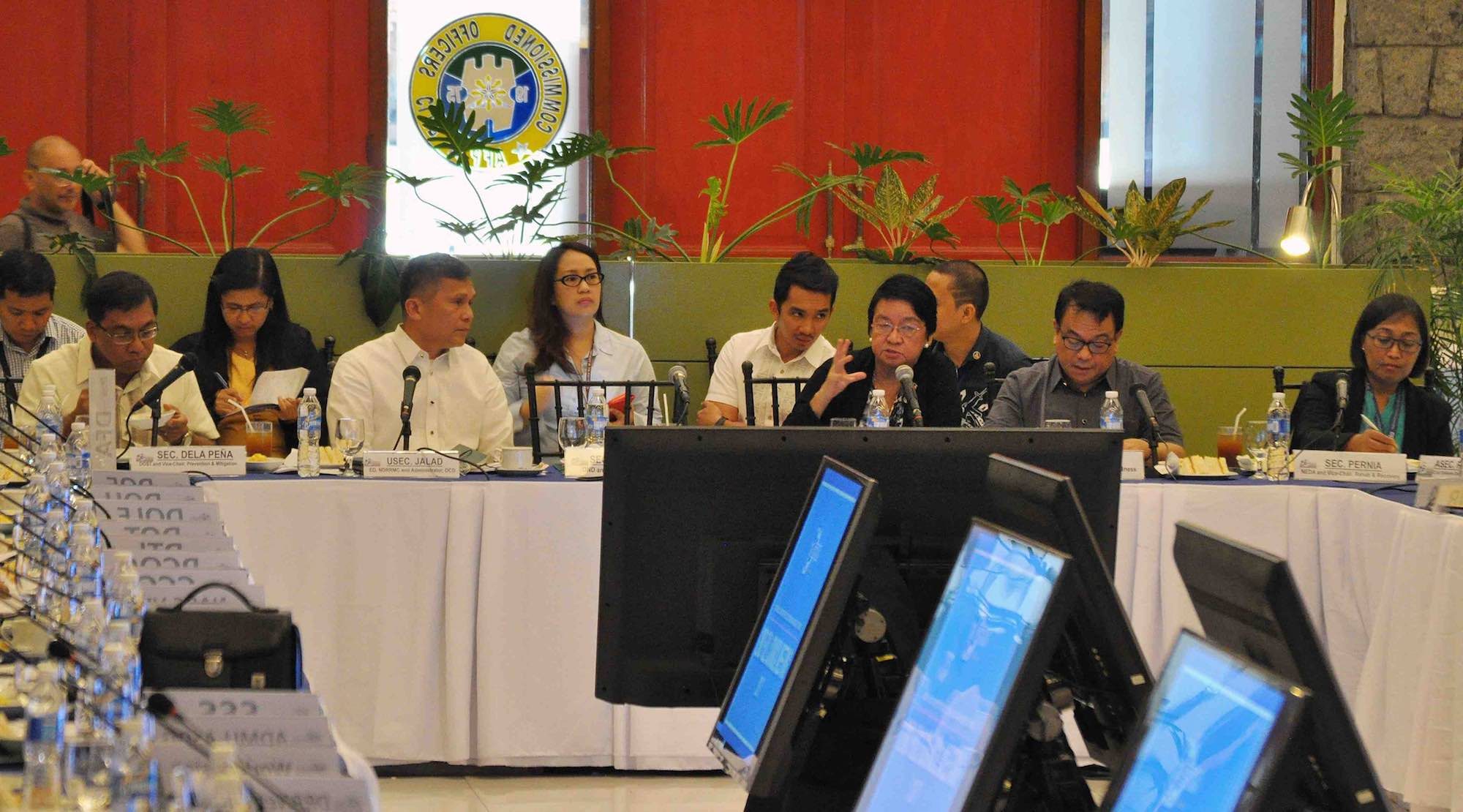SUMMARY
This is AI generated summarization, which may have errors. For context, always refer to the full article.

MANILA, Philippines – The country’s lead disaster management agency is seeking more funds from Congress to fund ongoing recovery and rehabilitation efforts across the country.
“Because there were may disasters in the last half of 2016, the budget for 2017 is not enough. That’s why we’re asking for the augmentation,” Social Welfare Secretary Judy Taguiwalo told Rappler after the meeting of the National Disaster Risk Reduction and Management Council (NDRRMC) on Tuesday, March 14, in Camp Aguinaldo.
NDRRMC approved a resolution that requests for a P78-billion supplemental appropriation from Congress to cover the requirements of the Post-disaster Needs Assessments (PDNA) for the following typhoons that hit the country in the past two years:
- Typhoon Ferdie (Meranti) that affected Batanes in September 2016
- Typhoon Lawin (Haima) that affected Region II and Cordillera in October 2016
- Typhoon Nina (Nock-Ten) that affected Bicol, Mimaropa, and Calabarzon regions in December 2016
- Typhoon (Melor) that affected Northern Samar in December 2015
Insufficient funds for recovery
For 2017, a total of P15.7 billion – a P23-billion decrease from P38.9 billion in 2016 – has been allocated in the General Appropriations Act for the NDRRMC Fund, formerly known as “Calamity Fund,” which includes quick response fund allocations that are spread across various implementing agencies. (READ: Where can you access disaster funds?)
According to Undersecretary Ricardo Jalad, Executive Director of the NDRRMC, only about P5.8 billion is left of the fund – not enough to fund the needs of affected areas that are recovering from disasters. Jalad said that the NDRRMC’s request does not yet cover the needs that arose from the recent flooding in Mindanao and the strong earthquake that hit the Caraga region.
Republic Act No. 10121 or the Philippine DRRM Act established a disaster fund on the national level to respond to urgent needs during emergency situations. Funding allocation is determined in the national budget upon the approval of the President as recommended by the NDRRMC.
Local governments also request calamity fund assistance through their local DRRM councils, provided that they submit documents with the endorsement of the OCD regional director:
OCD evaluates all requests. Only with the go signal from the President, as recommended by the NDRRMC, can the Department of Budget and Management (DBM) release a Special Allotment Release Order (SARO) and a Notice of Cash Allocations (NCA) to an implementing agency or LGU.
Aside from the national disaster fund, the People’s Survival Fund Act also provides financial assistance to projects that will address the impacts of disasters and climate change. Jalad said that NDRRMC also intends to tap this source of fund which has about P1 billion allocation.
Quickly release calamity fund
Meanwhile, during the meeting of the Joint Congressional Oversight Committee on Public Expenditures (JCOCPE) on Monday, March 13, Senator Loren Legarda renewed her call for the immediate release of QRF to affected communities, noting that “any response that is slow defeats the purpose of the fund to quickly address the needs of the people in times of disasters.”
The committee adopted Senate Minority Leader Franklin Drilon’s proposal for the QRF to be released within 3 days after a calamity strikes and for it to be exempted from the Commission on Audit (COA) rule that previous releases should be first liquidated before a new request is granted.
Legarda also said that the NDRRMC should shorten to 14 to 25 days the processing of requests by LGUs and agencies, in contrast to current experience of requests still pending even after the lapse of two to three months.
She also clarified that while in the 2017 budget only the Department of Social Welfare and Development (DSWD), the Department of Public Works and Highways (DPWH), the Office of Civil Defense (OCD), and the National Electrification Administration (NEA) have QRFs in their respective budgets, all other agencies of government can access assistance under the NDRRM Fund.
The senator explained that such setup was approved during the budget deliberations in 2016 in line with the DBM’s one-fund concept and also because there were agencies that did not utilize their QRF in previous years.
During its full council meeting, the NDRRMC adopted a set of guidelines on the use of the NDRRM Fund to hasten rehabilitation efforts.
“The guidelines streamlined the process to access the NDRRM Fund,” according to Mina Marasigan, spokesperson of the OCD, the secretariat of NDRRMC.
Marasigan said that under the new process, requests can be approved within 15 to 30 days. – Rappler.com
Add a comment
How does this make you feel?





There are no comments yet. Add your comment to start the conversation.